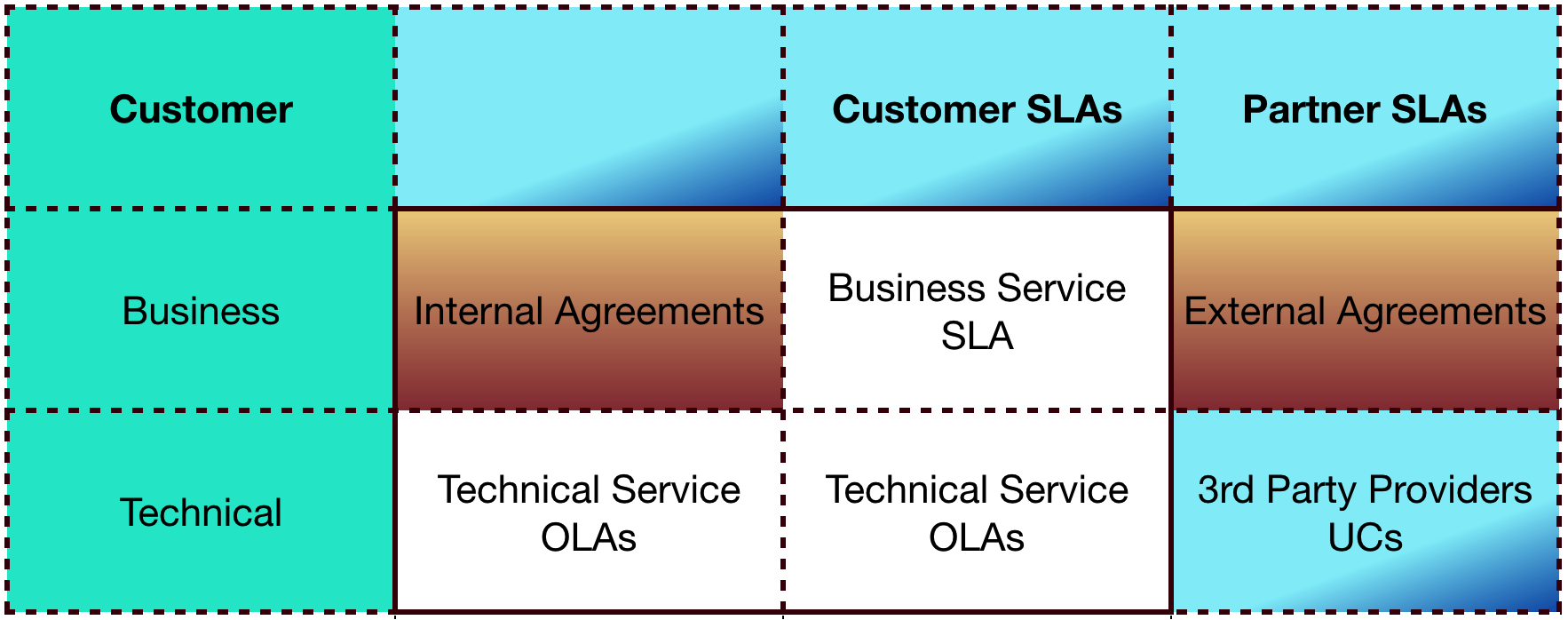WHAT IS BUSINESS SERVICE LEVEL AGREEMENT(SLA)?
As discussed in the introduction blog, service providers bundle utility and warranty based on customer preferences and perceptions to achieve a business outcome.
The service providers should ensure that Service Level Agreements(SLAs) are managed and monitored correctly to achieve business outcomes.

Let me do a deep dive into SLA. There are broadly two categories of SLA, as shown in the table above.
- Internal Agreements
- External Agreements
The Service Designers should ensure that SLA is based on the performance of the service operating within its agreed and documented parameters such as usage capacity, traffic profile, availability, speed and security. Service utilisation and usage pattern forecasting should be understood properly by service designers to ensure that service is configured and satisfy customer requirements
The Business Service SLAs should meet the Business Service Targets as defined in the Service Design Phase. These targets can be of
- Service Availability
- Service Continuity/Disaster recovery
- Capacity Limitations
- Service Reliability
- Serviceability
- Speed Targets
- Service Incident Resolution
Also, ensure that Support Requirements are taken care such as
- Support Hours
- Planned outage windows for affecting changes
- Security
- Incident and Problem Management
- Complaints and Definition Process
- Reporting and Service Level Reviews
- Steve Jobs
CONCLUSION
Defining and designing SLA is one of the critical aspects of any new or existing service. Managing quality is equally important as managing customer expectation in the long run, and this will differentiate the service provider from its competitors.

Leave a Comment